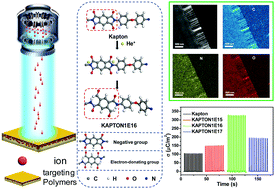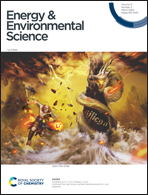Manipulating the triboelectric surface charge density of polymers by low-energy helium ion irradiation/implantation†
Abstract
Triboelectric materials and their modification methods are the cornerstones for fabricating triboelectric nanogenerators (TENGs). Numerous modification methods have been proposed for TENGs, while a highly effective and long-term stable method is still under exploration. Here, a surface modification method using low-energy ion irradiation has been proposed for tuning the chemical structures and functional groups of triboelectric polymers at the molecular level. The low-energy ion irradiation brings negligible change to the surface roughness at the micro-scale and mechanical flexibility of the target polymer, while it can provide a stable modification of the electrification performance. Systematic studies about the chemical structure changes in four different polymers induced by ion irradiation can bring insight into the interaction between different chemical groups and electrification performance. A Kapton film modified by ion irradiation shows several unprecedented characteristics, such as high surface charge density, excellent stability and ultrahigh electron-donating capability, and not only creates a new record in the tribo series, but also provides a good demonstration for regulating electrification behavior based on controllable chemical structure change. This study can open up a series of possible breakthroughs in the production of triboelectric materials with diversified properties, which can promote the study of TENGs from a very fundamental level.



 Please wait while we load your content...
Please wait while we load your content...